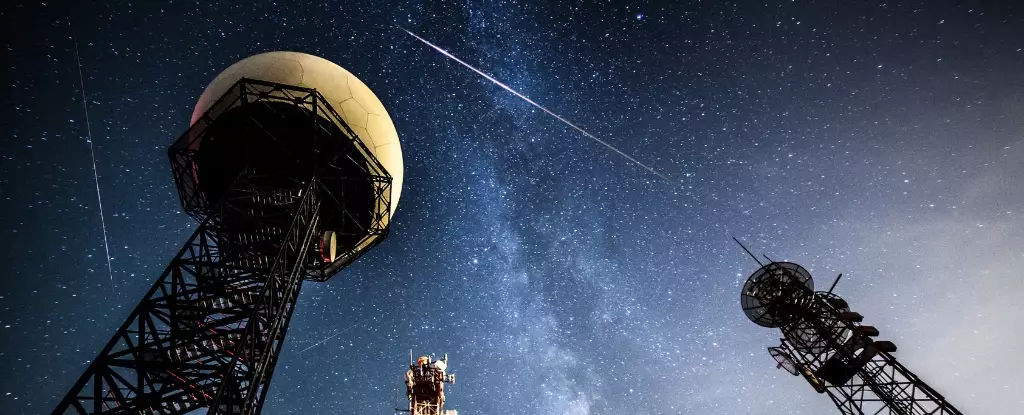Summer’s warm evenings and extended darkness create an ideal backdrop for celestial exploration. The months of July and August are particularly remarkable, offering a rare chance to observe some of the year’s most breathtaking meteor showers. These celestial events are not mere spectacles; they are profound reminders of our planet’s dance through space and our connection to the cosmic environment. With no need for complex equipment, sky gazers can immerse themselves in these fleeting but unforgettable displays, turning ordinary nights into extraordinary experiences.
What makes this period especially compelling is the convergence of multiple meteor showers—each with its unique character—peaking within days of one another. This overlap turns late summer nights into a rich tapestry of shooting stars, promising thrill and awe for seasoned astronomers and casual stargazers alike. The celestial ballet unfolding overhead demonstrates the perpetual motion of our solar system and the remnants of ancient comets and asteroids gracefully streaking through our atmosphere.
The Dynamics of Meteor Showers: Our Planet’s Cosmic Crossroads
Meteor showers are nature’s dramatic fireworks, occurring as Earth intersects with debris left behind by celestial travelers. These particles are remnants of comets or asteroids, long past their prime, shed during their journeys around the Sun. When Earth plows into this cosmic debris stream, each fragment incites a fiery entry into our atmosphere, creating streaks of light—meteors—that can be seen arcing across the night sky. This process offers a fleeting glimpse into the distant past, as these cosmic leftovers have been wandering the solar system for eons.
This year, the August sky is alive with activity. The Alpha Capricornids, Perseids, and Southern Delta Aquariids each have distinct origins and characteristics. Observing them not only satisfies curiosity but also deepens understanding of our solar system’s dynamic nature. The Alpha Capricornids, spawned by comet 169/NEAT, are notable for their striking brightness despite their modest numbers. Conversely, the Perseids, emanating from Comet Swift-Tuttle, are renowned for their prolific display, peppering the heavens with dozens of meteors per hour during peak nights.
A fascinating aspect of these showers is their radiants—the points in the sky from which meteors seem to originate. The radiants serve as celestial landmarks, guiding observers toward the best viewing directions. For instance, the Perseids’ radiant near Perseus and Cassiopeia makes these constellations crucial reference points, while the Alpha Capricornids radiate from Capricorn, offering a different viewing angle. This orientation is vital; understanding where these radiants lie can turn a good skywatching session into a truly spectacular one.
Personal Engagement: Making the Most of the Cosmic Display
While these showers don’t demand high-end tools, a few simple preparations can significantly enhance your experience. Given their faintness, especially with the bright moonlight sometimes obscuring them, binoculars or a telescope can help detect subtler meteors. More importantly, patience and proper timing are key. The best viewing typically occurs when the sky is darkest—late at night, just before dawn when atmospheric conditions are at their peak.
For those eager to dive deeper, modern technology offers valuable assistance. Smartphone apps—like Star Walk or Sky Guide—can identify constellations and alert you when the radiant points rise, maximizing your chances of witnessing a meteor. Cozying up with blankets, bringing snacks, and selecting a dark, unobstructed location will make your session both comfortable and rewarding.
Reflecting on the historical record, certain years have shown extraordinary displays from these showers, hinting at the unpredictable nature of space debris streams. The Southern Delta Aquariids, for instance, are known to surprise observers with stronger-than-usual shows, adding an element of anticipation to each peak. This unpredictability underlines the importance of patience and an open mind—every night under the stars could turn into an unforgettable event.
Why These Events Matter: Beyond the Visual Spectacle
Meteor showers are more than just a visual feast; they are intimate encounters with our cosmic surroundings. Observing these fleeting streaks can inspire awe and curiosity, fundamental drivers of scientific inquiry and a sense of unity with the universe. They remind us that Earth is not isolated but part of a vast, interconnected cosmic system, constantly brushing past remnants of past celestial journeys.
Furthermore, engaging with these skywatching opportunities cultivates a sense of stewardship over the night environment. Light pollution diminishes the visibility of such phenomena; thus, appreciating these displays calls for an effort to preserve dark skies. This awareness fosters a broader appreciation for the importance of natural darkness—an essential component of ecological and human well-being.
The summer meteor showers offer a golden opportunity not just to witness cosmic fireworks but to reconnect with the universe in a profound and personal way. As these shooting stars illuminate our nights, they challenge us to look beyond our daily routines and ponder our place among countless celestial objects. Setting aside time this season might just inspire a lifelong fascination with the cosmos—and a renewed appreciation for the timeless beauty that resides just above our heads.

